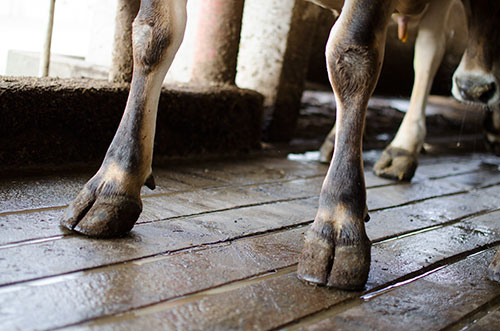
by Amanda Smith, Associate Editor
For cows to thrive, they need to move without impediment. The care, nutrition and environment we provide go a long way toward halting lameness in its tracks.
Over an eight-year period, records were collected from 724 cows in a Scottish dairy herd to determine if low body condition cows are at a greater risk of becoming lame. Weekly locomotion scores were used to classify cows as not lame, mildly lame and severely lame.
During this time, 17,114 lameness events were recorded. Of these, 8,799 were categorized as mildly lame (score 3); the rest were classified as severely lame (score 4 or 5). Cows had a median body condition score of 2.25.
Cows with body condition scores below 2 were at the greatest risk of future mild or severe lameness. The study results suggest that maintaining a body condition of 2.5 or greater may be optimal for reducing the risk of lameness. But this needs to be balanced with maintaining an optimum body condition score to control metabolic disease and dystocia.
Low body weights and an age of first calving greater than 24 months were also tied to an elevated risk of repeated mild or severe lameness events over a cow's lifespan. Cows calving at 33 months of age or older were at the greatest risk of subsequently being mildly or severely lame.
Other variables associated with an increased lameness risk included age, loss of condition within the four weeks postcalving and greater milk yields in the 16 weeks preceding a lameness event.
(c) Hoard's Dairyman Intel 2015
June 15, 2015





